'THE PSALTER OF MARGARET 'THE BLACK'', Countess of Flanders and Hainault, in Latin, ILLUMINATED MANUSCRIPT ON VELLUM
'THE PSALTER OF MARGARET 'THE BLACK'', Countess of Flanders and Hainault, in Latin, ILLUMINATED MANUSCRIPT ON VELLUM [Flanders, last quarter of the 13th century] 110 x 80mm. 227 leaves, including 2 blanks, the collation seems originally to have been irregular and the leaves are now partly bound out of sequence, making collation difficult: ff.9-10 should follow f.58, ff.18-26 should follow f.45, ff.99-102 should follow f.105, and f.187 should follow f.189, gaps in the text suggest that 31 leaves are missing, two medieval series of leaf signatures, catchwords on ff.167v and 177v, written in formal gothic book-hand in brown ink (the calendar also in red) between two verticals and 17 horizontals ruled in plummet, justification: 65 x 45mm, line-fillers throughout in red, blue and gold, one-line initials to verses alternately blue with red penwork, or gold with blue penwork, the penwork often spilling widely into the margins, three-line KL monograms in the calendar in rose or blue on gold grounds with animal and foliate extensions, similar three-line initials in gold edged with black on cusped grounds of rose and blue with white ornament, many of them historiated with male or female heads, to psalms, canticles, collects, etc., from which spring bars framing the upper, lower, and left sides of the text, the upper and lower right bars terminating with animal heads, OVER 100 MARGINAL DROLLERIES AND VIGNETTES IN THE ADJOINING LOWER RIGHT MARGINS, EIGHT CALENDAR MINIATURES, some of them in two compartments, inserted ad hoc into available spaces, one enlarged 5-line HISTORIATED INITIAL at the first canticle, SIX LARGE HISTORIATED INITIALS, typically 7-9 lines high, EACH ACCOMPANIED BY A FULL BORDER INCORPORATING FIGURES, ANIMALS, etc. at the normal divisions of the psalter (parts of the calendar excised and replaced with blank vellum, some stains, rubbing, and smudging, some loss of decoration at edges of leaves, signs of use throughout). Early 17th-century profusely gilt brown morocco over wooden boards, each cover framed with four rolls, enclosing foliate scrolls, with an oval centrepiece depicting the Crucifixion (upper cover) and Virgin and Child on a crescent (lower cover), the spine with four gilt raised bands, the compartments with gilt foliate scrolls, the edges of the leaves gilt, two clasps at the fore-edge fastening from the lower cover to pins projecting from the edge of the upper cover, in a cloth folder and brown morocco slipcase lettered in gilt 'PSALTER WITH CANTICLES ILLUMINATED MANUSCRIPT FLANDERS ABOUT 1260 - 1280' (some overall wear, two corners chipped, vertical breaks in the boards expertly repaired, re-backed with the spine re-laid on, the upper joint with some splitting). A CHARMING LITTLE VOLUME WITH A PROFUSION OF DELIGHTFUL MARGINALIA, PERHAPS MADE FOR MARGARET, COUNTESS OF FLANDERS AND HAINAULT PROVENANCE: 1. The calendar and litany give no precise indication of where the manuscript was made or intended to be used. Perhaps the only saints unexpectedly emphasised in red in the calendar are Denis (patron of France) and his rarer companion Rusticus. St Louis, canonized in 1297, is absent. Among the lesser saints in the calendar and litany, which together point to the area of Ghent and Bruges, are Lambert of Liège, Amand (apostle of Flanders), Donatian (to whom the cathedral of Bruges was dedicated), Basil (to whom the lower chapel of the Church of the Holy Blood at Bruges was dedicated), and Bavo (to whom Ghent cathedral was dedicated). The litany is very unusual in having eight women, from Felicity to Prisca, before Mary Magdalene and Mary of Egypt, who usually occur at the head of the list of Virgins. The list ends with Sts Ursula and Cordula of Cologne, which may suggest the involvement of a textual exemplar from further east. Some of the petitions are rarely found except in manuscripts from Flanders (see Kerstin Carlvant, Thirteenth-Century Illumination in Bruges and Ghent , unpublished PhD, Columbia Univers
'THE PSALTER OF MARGARET 'THE BLACK'', Countess of Flanders and Hainault, in Latin, ILLUMINATED MANUSCRIPT ON VELLUM
'THE PSALTER OF MARGARET 'THE BLACK'', Countess of Flanders and Hainault, in Latin, ILLUMINATED MANUSCRIPT ON VELLUM [Flanders, last quarter of the 13th century] 110 x 80mm. 227 leaves, including 2 blanks, the collation seems originally to have been irregular and the leaves are now partly bound out of sequence, making collation difficult: ff.9-10 should follow f.58, ff.18-26 should follow f.45, ff.99-102 should follow f.105, and f.187 should follow f.189, gaps in the text suggest that 31 leaves are missing, two medieval series of leaf signatures, catchwords on ff.167v and 177v, written in formal gothic book-hand in brown ink (the calendar also in red) between two verticals and 17 horizontals ruled in plummet, justification: 65 x 45mm, line-fillers throughout in red, blue and gold, one-line initials to verses alternately blue with red penwork, or gold with blue penwork, the penwork often spilling widely into the margins, three-line KL monograms in the calendar in rose or blue on gold grounds with animal and foliate extensions, similar three-line initials in gold edged with black on cusped grounds of rose and blue with white ornament, many of them historiated with male or female heads, to psalms, canticles, collects, etc., from which spring bars framing the upper, lower, and left sides of the text, the upper and lower right bars terminating with animal heads, OVER 100 MARGINAL DROLLERIES AND VIGNETTES IN THE ADJOINING LOWER RIGHT MARGINS, EIGHT CALENDAR MINIATURES, some of them in two compartments, inserted ad hoc into available spaces, one enlarged 5-line HISTORIATED INITIAL at the first canticle, SIX LARGE HISTORIATED INITIALS, typically 7-9 lines high, EACH ACCOMPANIED BY A FULL BORDER INCORPORATING FIGURES, ANIMALS, etc. at the normal divisions of the psalter (parts of the calendar excised and replaced with blank vellum, some stains, rubbing, and smudging, some loss of decoration at edges of leaves, signs of use throughout). Early 17th-century profusely gilt brown morocco over wooden boards, each cover framed with four rolls, enclosing foliate scrolls, with an oval centrepiece depicting the Crucifixion (upper cover) and Virgin and Child on a crescent (lower cover), the spine with four gilt raised bands, the compartments with gilt foliate scrolls, the edges of the leaves gilt, two clasps at the fore-edge fastening from the lower cover to pins projecting from the edge of the upper cover, in a cloth folder and brown morocco slipcase lettered in gilt 'PSALTER WITH CANTICLES ILLUMINATED MANUSCRIPT FLANDERS ABOUT 1260 - 1280' (some overall wear, two corners chipped, vertical breaks in the boards expertly repaired, re-backed with the spine re-laid on, the upper joint with some splitting). A CHARMING LITTLE VOLUME WITH A PROFUSION OF DELIGHTFUL MARGINALIA, PERHAPS MADE FOR MARGARET, COUNTESS OF FLANDERS AND HAINAULT PROVENANCE: 1. The calendar and litany give no precise indication of where the manuscript was made or intended to be used. Perhaps the only saints unexpectedly emphasised in red in the calendar are Denis (patron of France) and his rarer companion Rusticus. St Louis, canonized in 1297, is absent. Among the lesser saints in the calendar and litany, which together point to the area of Ghent and Bruges, are Lambert of Liège, Amand (apostle of Flanders), Donatian (to whom the cathedral of Bruges was dedicated), Basil (to whom the lower chapel of the Church of the Holy Blood at Bruges was dedicated), and Bavo (to whom Ghent cathedral was dedicated). The litany is very unusual in having eight women, from Felicity to Prisca, before Mary Magdalene and Mary of Egypt, who usually occur at the head of the list of Virgins. The list ends with Sts Ursula and Cordula of Cologne, which may suggest the involvement of a textual exemplar from further east. Some of the petitions are rarely found except in manuscripts from Flanders (see Kerstin Carlvant, Thirteenth-Century Illumination in Bruges and Ghent , unpublished PhD, Columbia Univers
.jpg)
.jpg)
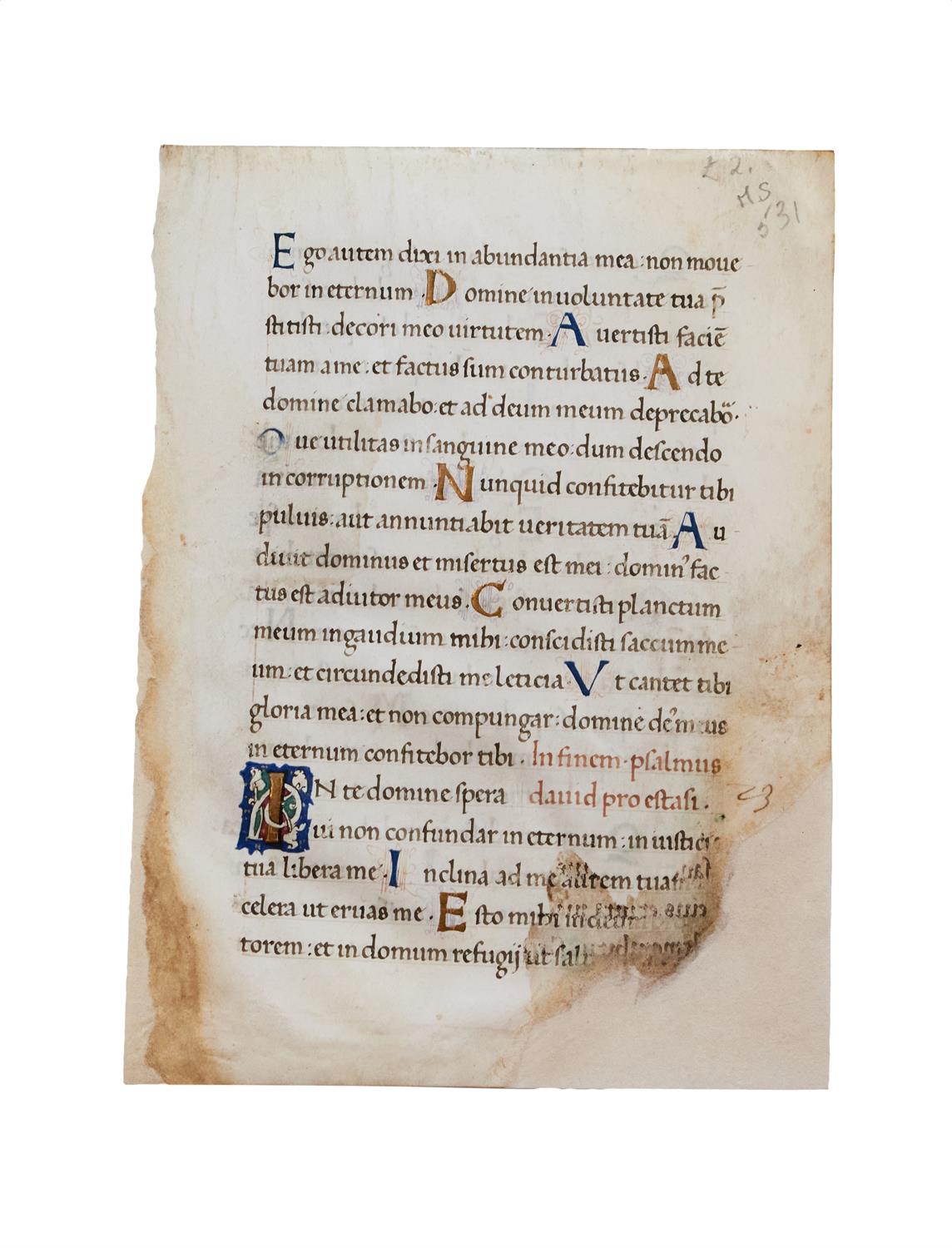
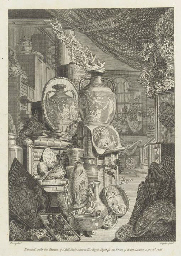


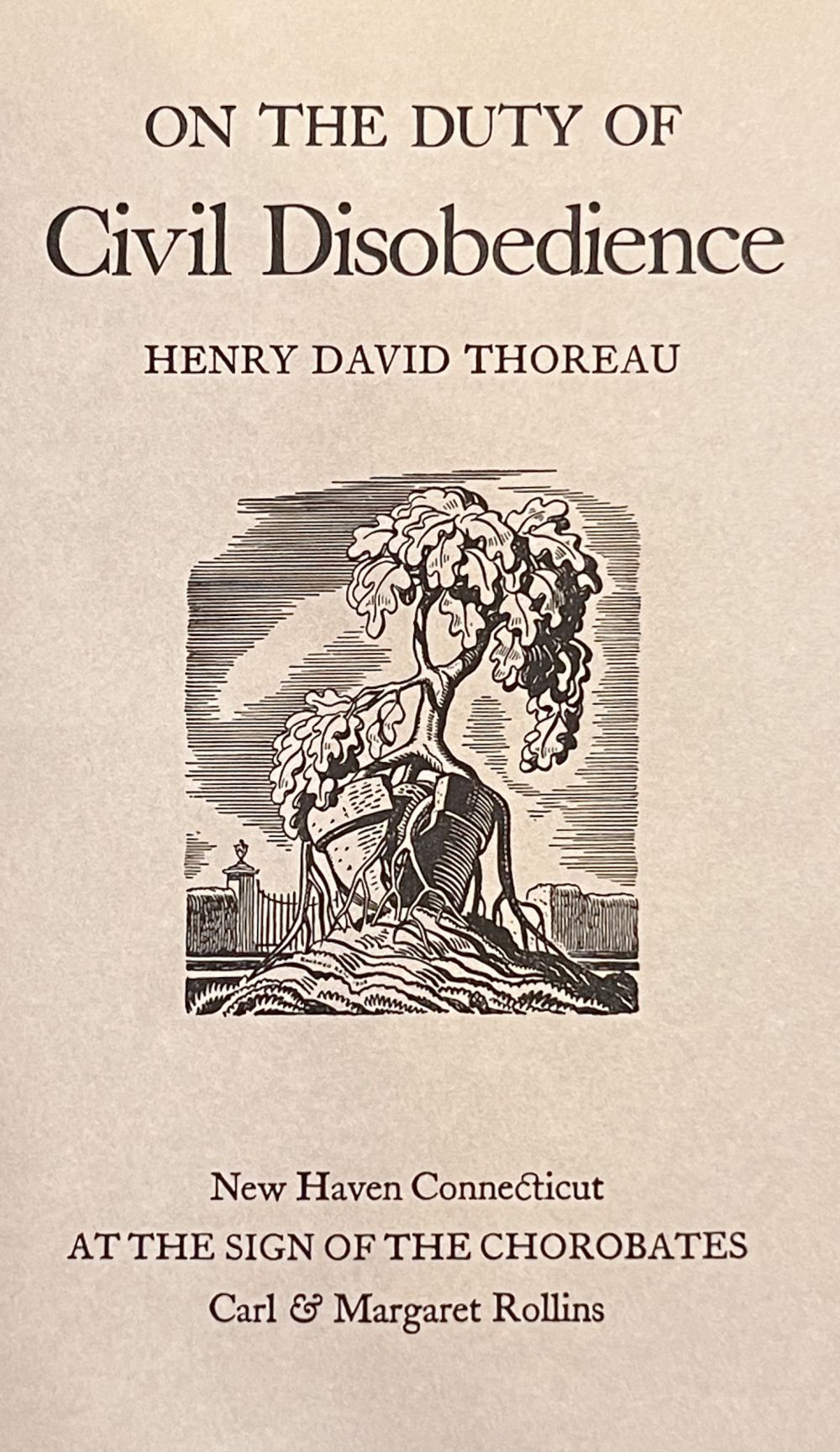

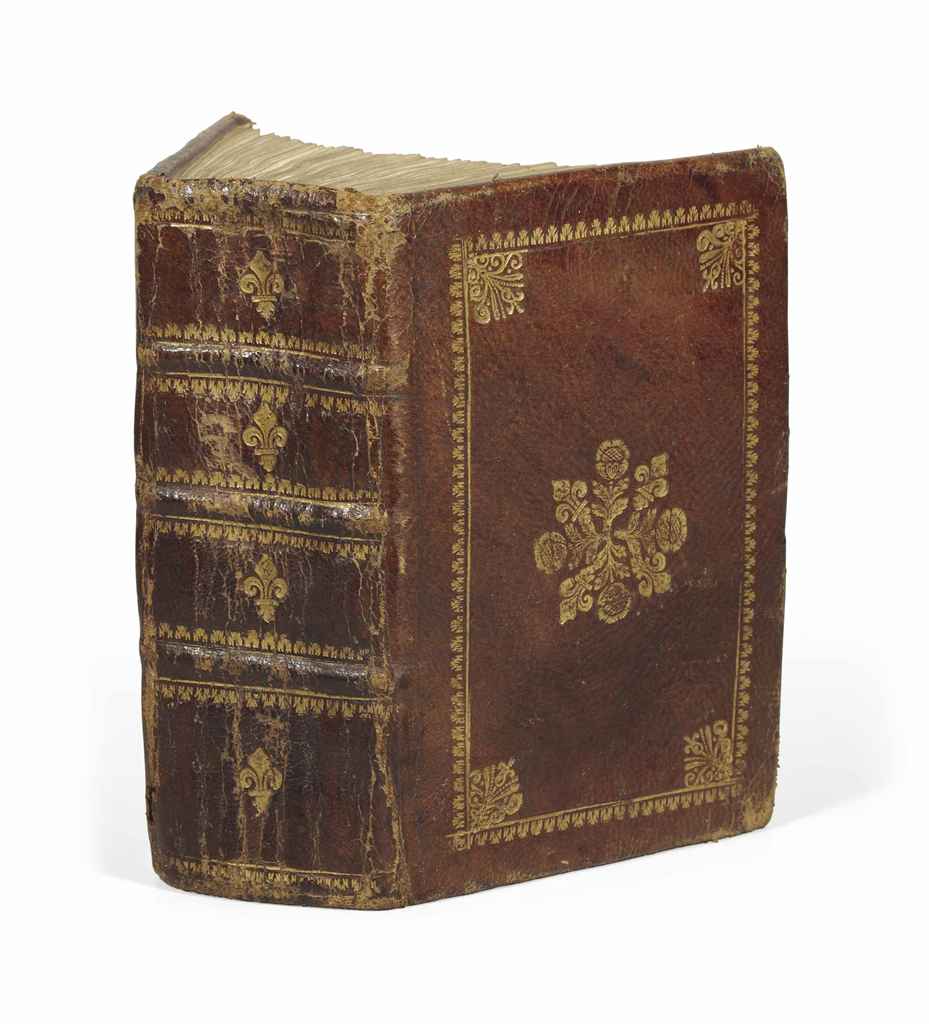
.jpg)
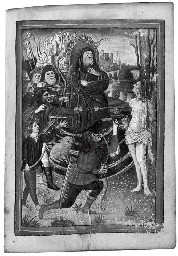
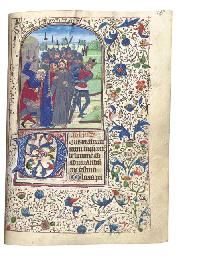


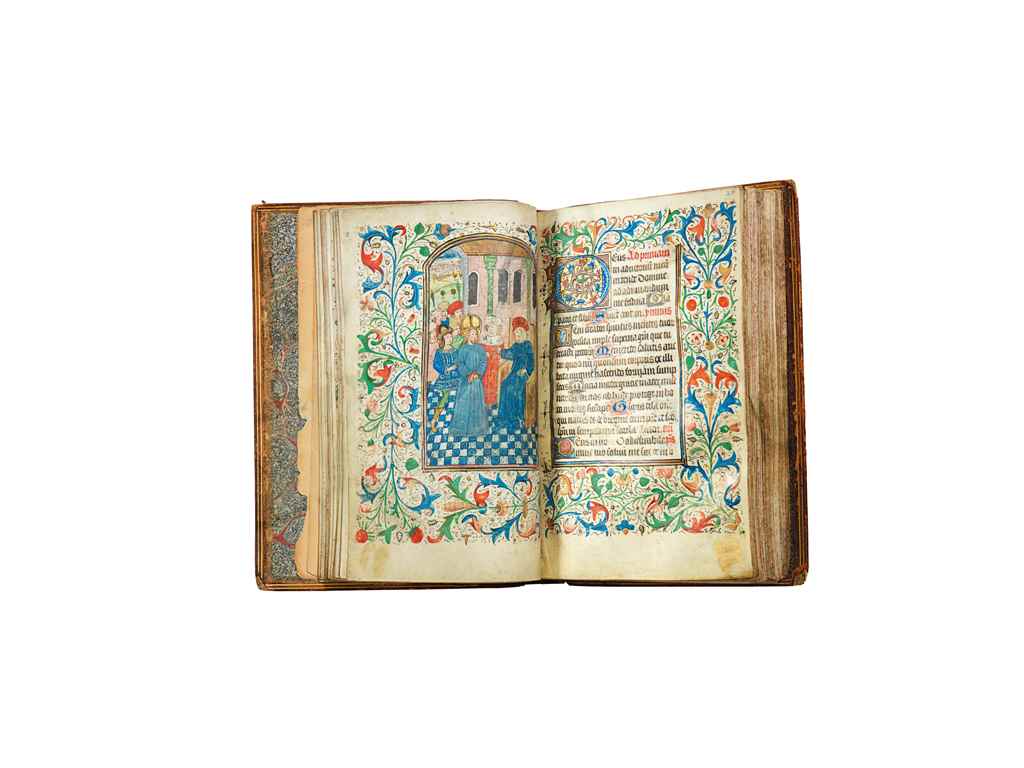
Testen Sie LotSearch und seine Premium-Features 7 Tage - ohne Kosten!
Lassen Sie sich automatisch über neue Objekte in kommenden Auktionen benachrichtigen.
Suchauftrag anlegen